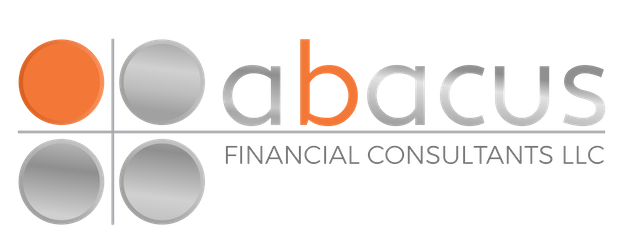When it comes to managing your personal finances, one of the most frequently asked questions is:
“How much cash should I keep on hand?”
Finding the right balance is crucial. Hold too little cash, and you can’t fund your day-to-day life, and risk being unprepared for emergencies.
Hold too much, and you’ll miss out on long term investment growth and see your net worth destroyed by inflation – both factors combining to result in your overall net worth being a fraction of what it should be.
In this article, we will explore the question “how much cash is optimal?”, the key considerations for building an emergency fund, and how having clarity on this question helps inform the rest of your financial planning strategy.
Why Cash Matters
Cash is the financial cushion that absorbs life’s unexpected shocks. It’s the reserve that lets you weather a surprise car repair, an unexpected medical bill, or a job loss without needing to resort to high-interest credit cards or liquidating investments at an inopportune time.
While cash provides stability, it comes with a trade-off: it doesn’t grow. In fact, it does the opposite – inflation erodes its value over time, meaning your purchasing power actually diminishes if your cash just sits idle.
This is why determining how much cash you need is a balancing act. It requires evaluating your risks, your goals, and your lifestyle. You need enough cash to cover:
- Your normal day-to-day spending.
- An emergency fund.
- Any larger short-term expenses that you won’t be able to cover from your normal income.
Having enough cash in your current account to cover point 1 is relatively clear, so let’s dissect points 2 and 3 a little further:
Building an Emergency Fund: Key Considerations
An emergency fund is the foundation of your cash reserve. It’s a dedicated amount of money set aside for true emergencies – the kind of unforeseen expenses that are urgent, necessary, and unavoidable.
The size of your emergency fund depends on several factors:
1. Income Stability – how reliable, robust, and predictable your short-term income will be is a major factor when considering the size of your emergency fund:
• Stable Income: If you have a steady job with reliable, predictable income, a smaller emergency fund will probably be more suitable (e.g. three months of living expenses).
This also applies if you have a long contractual period of gardening leave, or if you will be due a large lump sum upon ceasing employment (e.g. End of Service Gratuity).
• Variable Income: Freelancers, business owners, or individuals with irregular income streams may need a larger cushion, perhaps six to nine months of expenses.
This also applies for those whose income could “switch off” quickly, with short notice periods, no gardening leave, or no lump sums due upon ceasing employment.
2. Job Market Security – Consider the ease with which you could find a new job, if needed.
Those in niche industries or high-level positions that take longer to replace may require a larger reserve to bridge any potential gap in employment.
3. Fixed vs. Variable Expenses – Review your monthly expenses to identify essentials like rent, mortgage repayments, utilities, or groceries.
Some discretionary expenses – like eating out, holidays, or hobbies – can be cut temporarily if you need to tighten your belt for a period, but it’s important to identify the essential expenses that cannot be avoided.
Once you have identified your monthly essential expenditure, multiply this number by the number of months you’d like to cover to determine the minimum size of your emergency fund.
4. Dependents – If you’re supporting a family or have other dependents, your emergency fund should reflect the higher costs associated with these additional responsibilities.
5. Health and Insurance Coverage – Those with comprehensive health insurance or other safety nets might require a smaller emergency fund.
Conversely, if your coverage is limited, you may need more cash on hand.

Rules of Thumb for Emergency Funds
While everyone’s situation is unique, these general guidelines can help:
• Three to Six Months of Living Expenses: A common rule for those with steady income and minimal dependents.
• Six to Nine Months of Living Expenses: Ideal for individuals with less stable income, dependents, or high financial commitments.
• Tailored Amounts: If needed, adjust based on your personal circumstances and risk tolerance.
Beyond the Emergency Fund: How Much Cash Is Too Much?
Once you’ve established your emergency fund, it’s time to consider what’s next.
Excess cash beyond your emergency fund, held in cash, can lead to missed opportunities for growth.
Investments in diversified portfolios – using more productive asset classes like stocks and bonds – outperform cash over the long term.
Questions to Ask Yourself:
1. Are You Saving for a Short-Term Goal?
• For larger expenses you plan to incur within the next one to five years (i.e. that cannot be covered from income), keeping cash set aside in a high-yield savings account makes sense. Typical examples might be a wedding, a house deposit, or a major holiday.
2. What Is Your Investment Strategy?
• If your emergency fund is in place and you don’t have short-term goals, excess cash should be invested. Investments are a vehicle for building wealth over time, but only money you can leave untouched with some degree of certainty for five years or more should be invested.
3. How Much Liquidity Do You Value?
• Some people feel secure holding more cash than necessary, and that’s fine if it aligns with your goals and risk tolerance (for example, retirees will likely hold more cash as part of their retirement income planning, as they are in decumulation and care more about protecting their wealth and funding their lifestyle, than they do growth).
Just be mindful of the trade-off between liquidity and growth.
Net The Clarity of “What’s Left”
By defining how much cash you need, you gain clarity over “what’s left” and confirm the portion of your wealth that can – and should – be invested. This clarity has significant benefits:
1. Reduced Anxiety – knowing you have enough cash for emergencies lets you invest confidently without worrying about short-term market fluctuations.
2. Improved Financial Decisions – you’ll avoid the temptation to hold excessive cash “just in case,” freeing you to allocate funds toward long-term goals.
3. Optimised Portfolio – with a clear emergency fund in place, you can focus on building a diversified investment portfolio tailored to your risk tolerance, time horizon, and financial objectives.
4. Streamlined Goal Setting – when you know your cash needs are covered, you can better define and pursue other financial goals, from retirement, to children’s education, to travel.
Practical Tips for Managing Your Cash Reserve
1. Choose the Right Accounts – emergency funds should be kept in a high-yield savings account, for 3 main reasons:
a) Easy, instant access – ideally you will never need to dip into your emergency fund, but if you do, it will likely be on short notice. So it’s sensible to avoid tying up your emergency fund in fixed-term savings accounts (where access could be limited), or investments (that will fluctuate in value).
b) A high yield savings account will at least earn you some interest on your cash savings (standard current accounts tend to offer no/little interest).
c) Separation between your emergency fund and your current account. This ring fences the money and prevents you from accidently spending from it to cover standard day to day expenses.
2. Automate Your Savings – set up automatic transfers to build your emergency fund gradually from your current account. Once it’s fully funded, redirect those automatic transfers toward investments or other savings goals.
3. Reassess Periodically – your cash needs will evolve with life changes. Review your emergency fund annually or after major life events, such as a job change, marriage, or the birth of a child.
4. Avoid “Emergency Fund Creep” – resist the urge to keep adding to your emergency fund beyond what’s necessary. Excess funds should work for you through investments.
Conclusion – A Balanced Approach
Ultimately, how much cash you need depends on your unique circumstances.
The key is striking the right balance: enough cash to cover emergencies and short-term goals while ensuring you’re not sacrificing long-term growth. Once you’ve determined the optimal amount, you’ll have the confidence to invest “what’s left” with a clear and focused strategy.
If you’re unsure how to calculate your cash needs, or how to design a financial plan and investment strategy, then consulting with a financial planner can provide invaluable guidance. Feel free to reach out and one of our Financial Planners would be delighted to help.
By optimising your cash reserves and investments, you’ll be well on your way to achieving financial security and long-term success.
By Technical Team @ Abacus
Please keep in mind that, whilst we aim to update these articles periodically, the content could be subject to future rule changes. Always make sure to speak to a qualified professional to ensure you have the most up to date information and are taking regulated advice around your specific circumstances.

